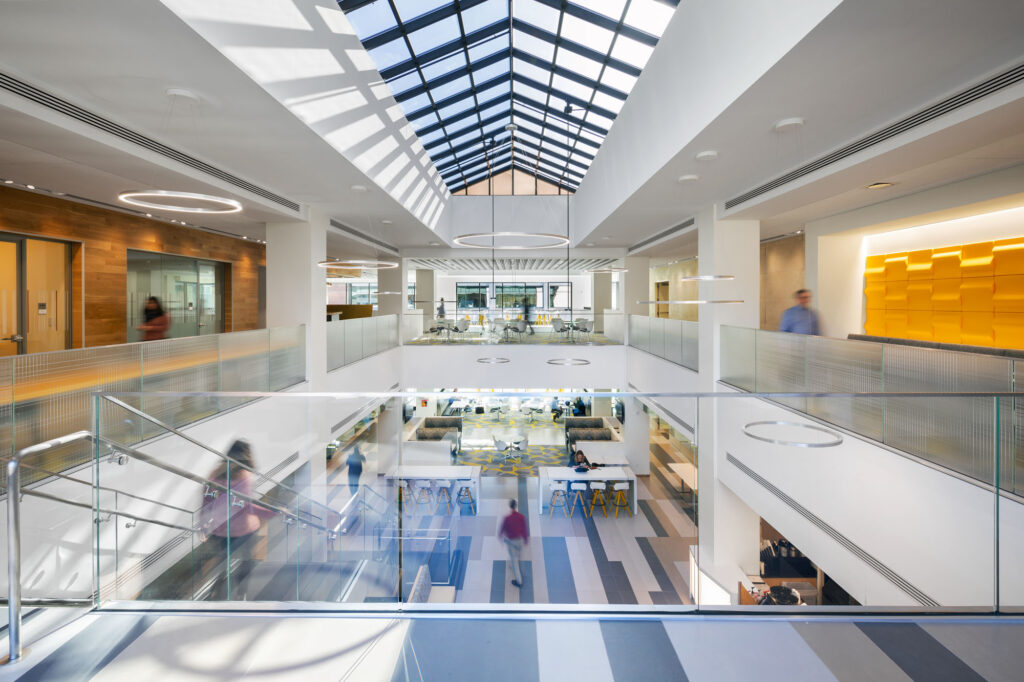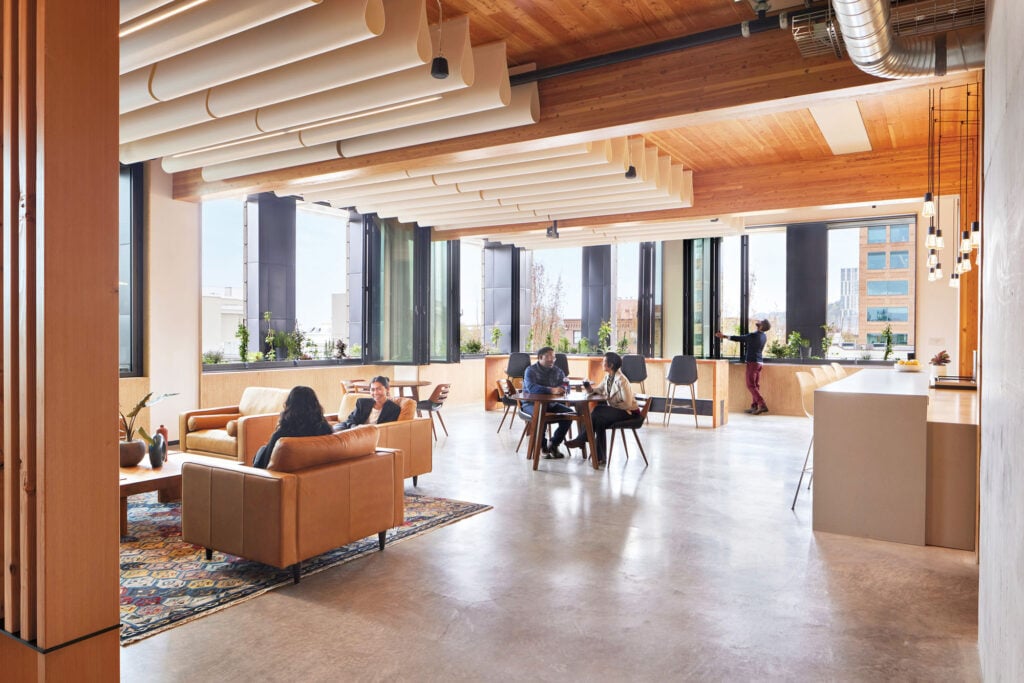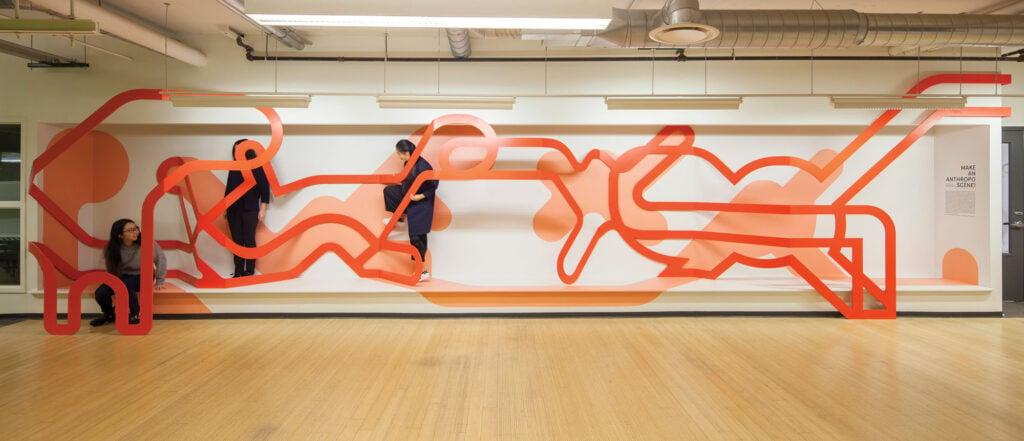
May 23, 2022
What Role Can Technology Play in Designing an Effective and Equitable Workplace?
Roche and Bristol Myers Squibb both have extensive experience using technology to communicate and collaborate in a laboratory setting and put equal access to technology on par with having the latest tools. “Virtual reality tools are used in the lab space, by employees at all levels” said Danielle Masucci, the lone architect on the panel and an associate and interior design principal at HDR. “Automation and the use of robots in the lab allow repetitive tasks to occur overnight and therefore bring extreme efficiencies to a research team,” she explained.
Christiane Glanzmann, global expert laboratory workplace strategy, Roche, said “We are investigating a lot of different technologies in the laboratory to make scientists’ work more practical. For example, we are envisioning one common platform, from which the scientist can access the experiment and make any type of procurement like samples.” She continued: “This of course needs a lot of interaction among different technologies, the suppliers developing protocols together with us.”
Laboratories need not be the cold, impersonal spaces they are stereotyped to be, Lubell said. “I’m fascinated by this concept of balancing out the coldness with some warmth.”
Paul Tackowiak is associate director, workplace strategy and planning at Bristol Myers Squibb. He brought up a Business Workplace Program in which the company shifted from cold high-walled cubicles and private offices to a completely egalitarian and open plan. “It aligns with our leadership’s desire to transform the company culturally,” he said. “We did that by carefully integrating several different workstreams at once. There’s the IT workstream for technology; the HR workstream for culture, communications and change; and our facilities and engineering groups.”

Masucci cautioned against overkill in technology that might hinder the great return to work. “You don’t want technology to be a deterrent and make people feel like, ‘Oh, this is all too complicated to return to work.’” That said, she was especially excited about new whiteboard technology she’s recommending to clients with remote workers. “There are programs that allow us to invite multiple teammates to this virtual whiteboard where they can post images. You’re able to draw over things and notate things, and it’s all saved in one place. It’s really no different than being in the same room together.”
The architect concluded that “Moving forward with clients like Roche and Bristol Myers Squibb and others, there is a great shift in the design of lab spaces. There are all of these fantastic tools out there that allow some science to happen outside of the physical lab environment.”
The Think Tank discussions were held on April 7, 14, and 21. The conversations were presented in partnership with Arden Studio, CertainTeed, Grohe, and Mecho.
Would you like to comment on this article? Send your thoughts to: [email protected]
Related
Projects
5 Buildings that Pushed Sustainable Design Forward in 2022
These schools and office buildings raised the bar for low-carbon design, employing strategies such as mass-timber construction, passive ventilation, and onsite renewable energy generation.
Projects
The Royal Park Canvas Hotel Pushes the Limits of Mass Timber
Mitsubishi Jisho Design has introduced a hybrid concrete and timber hotel to downtown Hokkaido.
Profiles
Meet the 4 New Design Talents Who Made a Mark This Year
From product design to landscape architecture and everything in between, these were the up-and-coming design practices making a splash in 2022.




